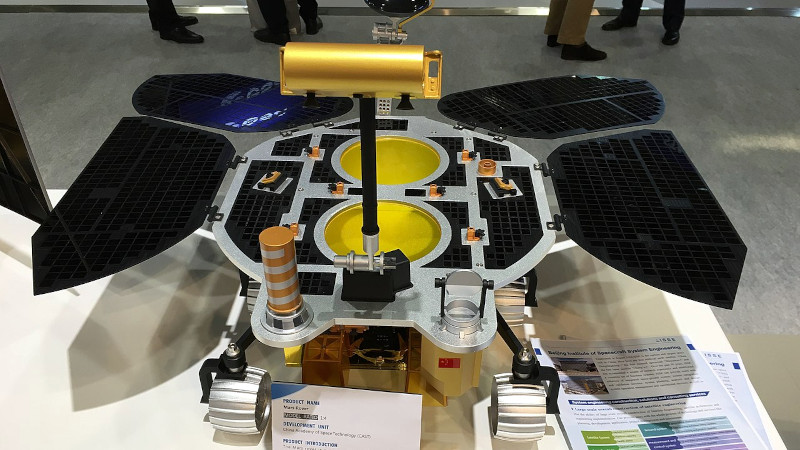A few days ago, the Chinese National Space Administration launched their Tianwen-1 mission to Mars from their launch site in the province of Hainan. It should arrive at the Red Planet in April 2021, when it will face the daunting task of launching a surface probe from its orbiting component, which will release a rover once it has reached the surface. Like all such missions it’s in constant contact with its controllers on the ground, and as with any radio transmissions floating through the aether its telemetry has been received by the radio hacker community and analaysed by [r00t].
Straight away there’s something interesting in the modulation scheme, instead of a carrier with modulation applied to it there is a main unmodulated centre carrier, and the data appears instead on a series of subcarriers. Is this a feature of its being a space probe, the unmodulated carrier making it easier to find and track in deep space?
They quickly find the telemetry carrier, and decode its frames. It carries a series of data sets, including positional and instrumentation data. From the positional data they can tell when the craft has made any course changes, and from the sensor data such as the solar sensor its movement can be deduced and graphed. It makes for a fascinating insight into the mission, and we’re grateful for the analysis.
Mars is a notoriously difficult target for space probes, somewhere that multiple missions have for various reasons failed to reach. We hope the Tianwen-1 mission is ultimately successful and that in time the Chinese space people will in due course be showing us some of the fruits of their labours. They’re not alone in launching this month, so we’ve got a plethora of Mars-related stories to look forward to next year.
Header image: Tianwen-1 rover mockup. Pablo de León / CC BY-SA 3.0















http://www.r00t.cz/Sats/Tianwen1 is flagged up as a malware page for me.
It’s fine. I’ve spoken with the author of the site as well as the web hoster. He’s just too lazy to make it https.
Rover telemetry like “Are we there yet? Are we there yet? Are we there yet?”
When will we get there? When will we get there?
April 2021
Oh. I hope it’s not April 1st.
Best of Luck to China on this one, they will need it. If Soviet Union is any example to go by.
At least it’s practicing social distancing!
I wonder how much power that constant carrier is using.
I wonder if they actually manage to land this thing. So far the only country that has successfully landed a mars probe that kept functioning is the US. Russia tried many times, the EU left a devastating impression on the surface but not more than that. It would really be a first!
to be fair, the 1st crater on the surface of Mars involving EU was solely caused by *somebody* using different measurement units…
Unfortunately, everything in your comment is wrong.
ESA’s Beagle 2 seems to have landed successfully on Mars in 2003, and only failed during post-landing deployment. (This was only discovered many years later, by seeing it apparently partially deployed in a HiRISE photo, after having assumed for years that it had indeed failed somehow during EDL and crashed.)
ESA’s Schiaparelli EDM failed to land successfully, due to insufficiently robust design for EDL. It was not a unit mixup. It did succeed at its main goal, which was to gather experimental data on Mars EDL.
NASA’s Mars Climate Orbiter is the only Mars probe I know of that was lost due to unit mixup (NASA: metric units, Lockheed Martin: American units).
So, why are you buying it if it’s .rap?
Let the Mars Edition of Robot Wars begin!!!
There’s nothing bizarre about the use of an unmodulated center carrier. This is the norm with deep space probes; the signal is phase modulated with residual carrier. Usually, the telemetry is transmitted at 16384 baud and modulated onto a 65536 Hz subcarrier. When you look at the signal as I/Q, I would have modulation (sideband) and Q would have constant offset (creating unmodulated carrier in the middle).